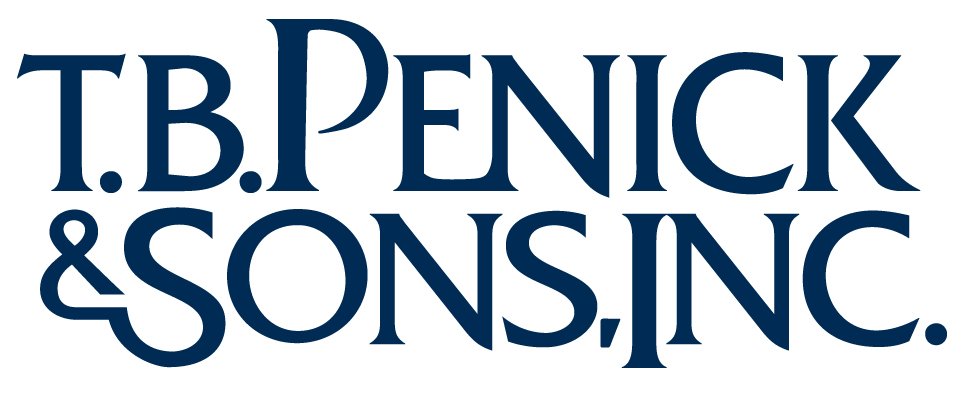March 2020 Special Report: Moving ahead, challenging times confront the design professions
Like most other businesses, U.S. architecture firms are heading into uncharted waters regarding what the economy holds in store for them as the COVID-19 pandemic plays out globally. This situation is exacerbated by the lack of timely business intelligence to help firm leaders make informed decisions. Quite clearly, though, economic activity has been ramping down in the U.S. since early March, with the downturn accelerating beginning around the middle of the month. Jefferies Financial Group has developed a weekly activity indicator based on common social and business behaviors, and it estimates that business activity was about 67% of normal levels as of March 20. The indicator—which is not an effort to measure economic output—includes activities like traffic congestion, hiring levels, energy usage, public transportation utilization, and airline flight activity.
Quite obviously, though, different businesses are feeling the impact of the slowdown differently. Businesses that generally see larger crowds in close proximity were the first to feel the fallout, including industries like travel, hospitality, and amusement and recreation. Businesses that rely on some direct physical contact with their customers generally were the next to deal with the slowdown; retailing, professional and personal services, education, and routine health care operations all fall into this category.
Industries that rely on minimal direct contact with their customer base—like construction, manufacturing, distribution, and technology—have typically experienced a slower falloff in business activity. However, states and localities are increasingly setting limits on any business activity not deemed as critical in these circumstances. Finally, businesses deemed as essential to support critical medical, social, and economic operations—in areas such as emergency health care, public safety, agriculture, and food distribution, as well as some government functions—generally have not scaled back, and many have seen accelerated levels of activity.
Design and construction dragged down by broader economic slowdown
The design and construction industries generally were not one of the initial industries to bear the full brunt of the economic fallout created by the spread of COVID-19, but as economic times have become more uncertain, there have been more limits placed on these activities. The recent survey conducted by the American Institute of Architects (detailed below) found that 50% of architecture firms reported fewer new design projects for March—as of the March 23 survey date—as compared to their expectations entering the month. The percentage increased to 59% for new inquiries for design work. In terms of work on active projects, the overwhelming majority of architecture firms (83%) are anticipating a decline in revenue for March relative to their expectations heading into the month, with over a third of firms estimating that their revenue will be at least 10% below expectations. This situation is anticipated to worsen in April, with 94% of firms expecting revenue declines, and over half of firms (57%) anticipating that the revenue falloff will exceed 10%.
Construction contractors are likewise seeing a slowdown in project activity. A survey conducted by Associated General Contractors of America over March 17–19 found that 28% of respondents reported directed delays in current projects or those slated to start over the next 30 days, and an additional 11% reported directed delays in projects expected to start more than 30 days out. Respondents reported that delays were caused by a variety of reasons: problems with deliveries of materials or equipment; shortages of workers for either the contractor or subcontractors; or delays in obtaining permits, certificates of occupancy, inspections, or other approvals.
Separately, Dodge Data and Analytics reported recently that the value of commercial projects entering their planning stage declined in the third week of March relative to levels in the second week, while the value of institutional projects entering the planning stage dropped fairly sharply in the second week of March, and declined even more in the third week.
Monetary and fiscal support rolled out
Monetary and fiscal policy has ramped up significantly recently in an effort to avert economic hardships. The Federal Reserve Board initiated two interest rate cuts in March, bringing the short-term federal funds rate effectively to zero. Additionally, it committed to providing necessary liquidity to keeping financial institutions afloat and purchasing short-term and long-term debt as necessary to stabilize the economy.
On Wednesday, March 25 the Senate passed the CARES Act, which provides approximately $2 trillion in funding for programs to support a response to COVID-19 and to bolster the economy. The House of Representatives is expected to pass this legislation without changes on Friday, March 27. Some of the policies in this legislation include:
$1,200 checks paid directly to Americans under a certain income threshold, with extra for households with children
creation of a $349 billion loan program for small businesses
establishment of a $500 billion lending fund for impacted industries
$150 billion for State, local, Tribal, and US Territory relief funds
$100 billion for hospitals
a significant boost to worker unemployment insurance benefits, including expanding eligibility and offering workers an additional $600 a week for four months on top of what state unemployment programs pay
The size of the stimulus program, about three times as large as the TARP fund approved to deal with the fallout from the 2008–2009 Great Recession, underscores the federal commitment to shoring up the economy as well as the perceived extent of the difficulties that the economy is likely to face in the coming months.
Projected impact of the COVID-19 outbreak on architecture firms in March and April
As mentioned above, the AIA conducted a special survey to assess the short-term impact of the COVID-19 outbreak on architecture firms, and respondents largely indicated that there remains a great deal of uncertainty. Key findings from that survey are detailed below, and include the following:
59% of firms expect inquiries for new work to decline in March
67% of firms have already seen prospective projects slow or stop
76% of firms have confronted at least one problem with their current projects related to the COVID-19 outbreak
Nearly half of firms indicated that all/virtually all of their staff are now working remotely
Firms anticipate revenue losses of 10% in March, 15% in April
Architecture firms anticipate declining interest in new work in March
Respondents were first asked about how they estimate that two indicators of future work at their firms—inquiries for new work and the value of new design contracts—are expected to change from February to March. Overwhelmingly, responding firm leaders reported that they expect inquiries for new work to decline (59%), while 35% expect them to remain unchanged from February, and just 6% expect them to increase. (Figure 1) When last surveyed as part of the regular monthly survey at the beginning of March, just 14% reported that inquiries decreased from January to February, while 35% reported that they had increased.
Slightly fewer firms expect the value of new signed design contracts to decrease from February to March, 50%, while slightly more expect the value to increase, 9%. These numbers are still significantly down from the beginning of the month, though, where 24% reported an increase and 16% reported a decrease. When comparing across the different demographic groups of the responding firms, trends are generally consistent regardless of firm location, size, and specialization. However, firms located in the Northeast, and those with a residential specialization, were slightly more likely to expect a decline in project inquiries and signed design contracts than other firms.
Existing, prospective projects also seeing delays
Additionally, two thirds of responding firms reported that they have seen prospective project inquiries or negotiations for new projects moving more slowly or completely stopping due to issues related to the COVID-19 outbreak, with 17% saying that many prospective projects have slowed or stopped, and 50% saying that some projects have slowed or stopped. However, 33% reported that at this time, all prospective projects were still moving ahead as expected. (Figure 2)
But firms also reported that they have confronted a variety of problems with current projects that seem related to the COVID-19 outbreak, with issues related to delayed projects, stalled construction, and increasing project cancellations among those cited. In addition, one quarter of firms indicated that they have had more difficulty obtaining permits for projects, likely because many of those offices are now closed due to the outbreak. On the other hand, issues related to obtaining products or materials for construction, or problems with project financing, have not yet been seen by a large share of firms. (Figure 3)
Most architecture firms have limited in-person interactions for the time being
Responding firms were also asked about conditions that they were seeing at their office as a result of the COVID-19 outbreak, and those responses fell into three broad categories: changes to staff working conditions, changes to office operations, and changes to staff travel. Just under half of firms (48%) indicated that all, or almost all, of their staff are now working remotely, while 31% reported that some of their staff are working remotely. Few firms reported a major impact to their staff due to family/personal reasons, but 15% of firms said that at least some of their staff are currently unable to work at all. (Figure 4)
The largest share of firms, 79%, said that they are currently limiting in-person client meetings, and/or moving those meetings to virtual meetings. But so far, few firms have made active changes to redesign their office space to implement social distancing. And while nearly half of firms have implemented temporary work-related travel restrictions, just 19% have implemented a strict no-travel policy for work for the foreseeable future.
Firm revenue declines due to COVID-19 expected to accelerate in coming months
Finally, responding firms were asked to estimate how much of a loss in revenue they expect to experience in March and April due to issues related to the COVID-19 outbreak. On average, firms estimated a 10% loss in revenue in March, increasing to a 15% loss in revenue in April, with many respondents commenting that they anticipate conditions may continue to worsen in the subsequent months as well. (Figure 5) And while nearly one fifth of respondents (17%) expect no revenue loss in March due to the COVID-19 outbreak, the share of respondents expecting revenue losses of 25% or more nearly doubles from March to April, increasing from 13% to 25%.
These data are from a special survey to assess the short-term impact of the COVID-19 outbreak on architecture firms that was sent to the architecture firm leaders that comprise the AIA’s Work-on-the-Boards survey panel on March 17, 2020. The survey was closed on March 24, with a total of 387 responses received.

























